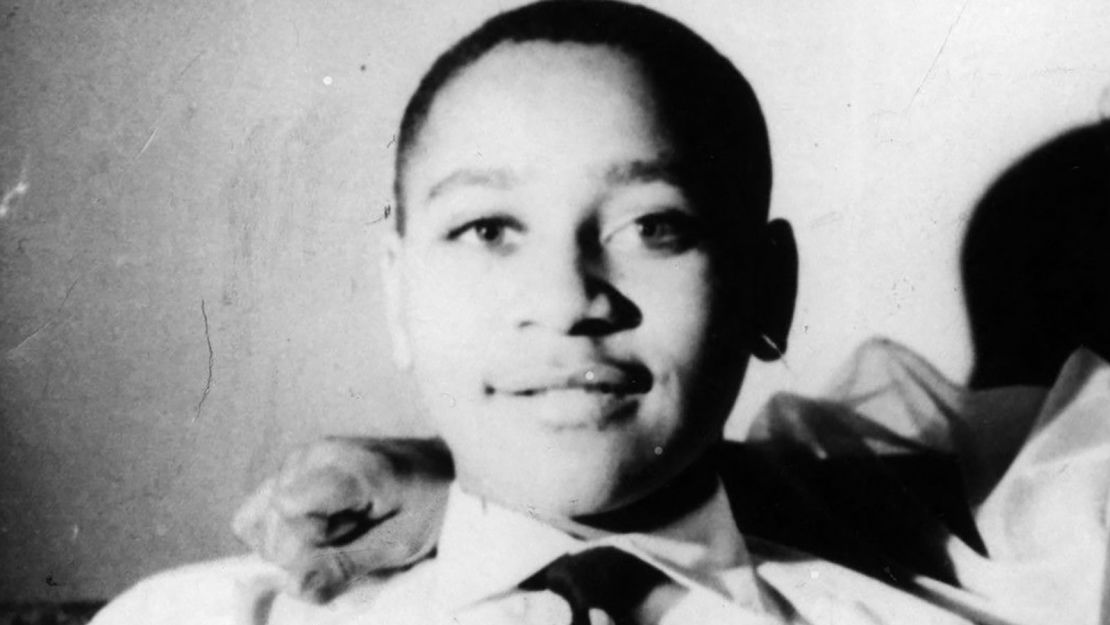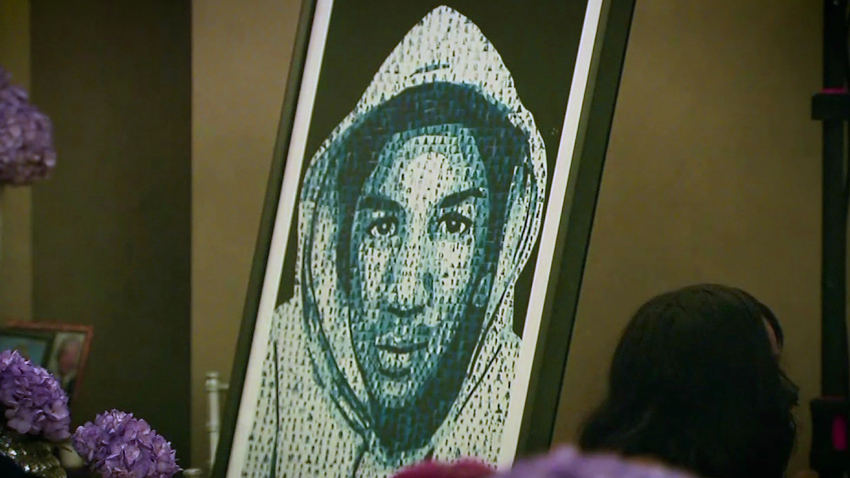A version of this story appeared in CNN’s Race Deconstructed newsletter. To get it in your inbox every week, sign up for free here.
Police officers’ aggressive handling of a Black teenager in New Jersey wasn’t anomalous – it was part of an age-old pattern of treating Black men and boys as threats to be subdued.
In a video that went viral last week, two Bridgewater Township officers break up a fight at a mall between two boys: one White, the other Black. While the White teenager is pushed onto a nearby couch, the Black teenager is pinned to the ground and then handcuffed. Civil rights attorney Ben Crump, who’s representing the family of the Black teenager, said in a recent statement that the incident pulled into focus “the kind of racial bias that we need to root out of our system of policing.”
But it’s not only the country’s policing system that fails to recognize the humanity of Black boys. The impulse in the US to treat them not as children but as brutes, as villains, extends far beyond law enforcement.
The New Jersey incident occurred just as many prepare to observe the 10-year anniversary of the death of Trayvon Martin, the Black 17-year-old whom George Zimmerman gunned down on February 26, 2012.
On the night of the shooting, Zimmerman, who was a neighborhood watch captain in Sanford, Florida, called 911 on Martin. Zimmerman described the teenager using a label that’s long been tagged to Black boys: suspicious. Disregarding police orders not to engage, Zimmerman confronted the teenager. An altercation broke out; Martin was shot dead.
Zimmerman claimed that he acted in self-defense, and he was eventually acquitted. The case illustrated in heartrending fashion a long US history of weaponizing the principle of self-defense against Black men and boys and, more to the point, portraying them as unpredictable aggressors whose every move must be controlled.
A history of dehumanization
To understand this genealogy, let’s rewind to the second half of the 19th century.
Many White Americans responded to the emancipation of Black Americans in 1863 by stoking the anxiety that Black men “would exact sexual revenge against White men through their daughters,” per the National Museum of African American History and Culture (NMAAHC).
The NMAAHC further notes that this fearmongering had horrific repercussions for Black communities, because bolstering stereotypes of Black men as “animalistic and brutish gave legal authority to White mobs and militias who tortured and killed Black men for the safety of the public.”
It’s worth emphasizing that these anti-Black narratives and their effects weren’t limited to the American South; as the NMAAHC says, “headlines of newspapers across the nation, beginning around the turn of the century, document a frenzy of arrests, attempted lynchings and murders of ‘Black brutes’ accused of insulting or assaulting White women.”
While many of these sensationalist news stories focused on Black men, Black boys weren’t spared from dehumanizing stereotypes, either.
“Through brain measurements, doctors and anthropologists set out to prove that Black children’s frontal lobes closed up during adolescence,” Stacey Patton, an associate professor of journalism at Howard University, wrote for The Washington Post in 2014. “And when that happened, their brains stopped learning and their genitals became over-developed and a sexual threat to Whites. Some politicians openly advocated for the castration of Black boys.”
No matter that there was never any evidence to support these theories; the important thing was to plant the idea, water it with fear and watch the animosity grow.

History is filled with examples of the sometimes lethal consequences that racist perceptions have for Black boys. Maybe the most infamous example occurred in 1955.
In August of that year, 14-year-old Emmett Till, who was visiting relatives in Money, Mississippi, was accused of flirting with or making advances at a 21-year-old White woman, Carolyn Bryant (later Bryant Donham). Four days later, her then-husband and his half-brother kidnapped Till, beat him, shot him in the head, tied a 75-pound cotton-gin fan to his neck with barbed wire and then discarded him in the Tallahatchie River – all punishment for the boy’s alleged violation of the state’s racial order, for the danger he, a mere child, posed to it.
An all-White jury acquitted the two men not even a month after Till’s swollen and mangled body was retrieved from the river.
Till’s story exemplifies a wider truth: Black boys are often viewed differently than their White peers simply because of their race.
A study published in 2014 found that one result of the decades-long dehumanization of Black boys is that they’re “seen as older and less innocent and that they prompt a less essential conception of childhood” than do their White counterparts.
Put more bluntly, Black boys aren’t seen as children at all – instead, they’re a menace.
The cycle continues
Though history offers egregious examples, you don’t have to comb through bygone decades to observe the disdain that many Americans have for Black men and boys. You can just look at recent headlines.
On Tuesday, a jury issued a guilty verdict in the federal hate crimes trial of the three White men who killed 25-year-old Ahmaud Arbery, supporting the prosecution’s case that the men chased and murdered Arbery precisely because he was Black.
Perhaps coincidentally, the verdict was released almost two years ago to the day – February 23, 2020 – on which Travis McMichael, Gregory McMichael and their neighbor William “Roddie” Bryan followed Arbery through the streets of a Georgia neighborhood and gunned him down.
To illustrate that the McMichaels and Bryan pursued Arbery out of racial animus, the prosecution highlighted that the three men talked about Black Americans using racist language.
Prosecutor Christopher J. Perras said during closing arguments on Monday that Arbery’s killers saw “a Black man in their neighborhood and assumed the worst of him.”
“This wasn’t about trespassing. This wasn’t about neighborhood crimes, either. It was about race – racial assumptions, racial resentment and racial anger,” Perras said.
Last year, during the state murder trial of the three men, Laura Hogue, one of Gregory McMichael’s lawyers, unsuccessfully sought to win sympathy for her client by making a comment to jurors about Arbery’s “long, dirty toenails” – a move that was decried as a sop to racial assumptions that cast Black men and boys as beasts.
“What she was doing was pulling a page from the age-old textbook on anti-Black violence,” Caroline Light, a senior lecturer at Harvard University, where her research focuses largely on histories of citizenship and belonging, told CNN. “That has a very long history in this nation – the criminalization of Black men and boys as somehow being less than human.”
Light also drew parallels between the McMichaels and Bryan trial and the Zimmerman trial.
“If you look at George Zimmerman’s case, the defense did everything it could to smear Trayvon Martin, to make him appear as some terrifying villain rather than a child. And that (practice) is formulaic.”
Of course, the two trials ended in dramatically different ways, at least in part because of the role that video of Arbery’s murder played in advancing justice.
“What’s true now, that was never true before, is that a White family sitting in their home can have to watch with their own eyes,” writer Wesley Lowery, who covered the unrest that occurred in Ferguson, Missouri, after a White policeman fatally shot Black 18-year-old Michael Brown in August 2014, told CNN’s Laura Jarrett. “(Video) forces a level of empathy that has otherwise never existed between Black and White America.”
Former US Attorney General Eric Holder echoed some of Lowery’s sentiments.
“The jury is actually witnessing what happened,” Holder told Jarrett. “Video helps the prosecution a great deal.”
Yet 10 years after Martin’s death, it’s hard to say that the US is in a fundamentally better place when it comes to the treatment of Black men and boys, even with the recent conviction of Arbery’s killers of hate crimes.
“The fact that we still see this (dehumanization of Blackness) is, I think, proof that we’ve not really come that far,” Light said. “I wish that I had a silver lining. But I think that we’re going to continue to see these kinds of narratives play out because they’re so effective, ultimately (at reinforcing existing power structures).”

